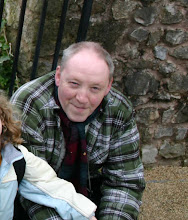
Readers here will recognise I have a major and personal interest in NRM York, something like 100 metres of shelving. However York is 100 miles away and the Shildon Locomotion outstation is about 30. That's fortunate and the goings on at Shildon are interesting and worth following. The prospect therefore that Tornado would take Mallard to meet Joem in a family get together yesterday afternoon was very tempting. Fiona drove myself and Clare - after her Hexham swim - down to Shildon. The train had run slightly early and we arrived about 10 minutes after the real action. We were in enough time to see Tornado leave and hear a chorus of chime whistles. And we managed a picture of Mallard in her traveling condition. A lot of people were losing their cool trying to take photos as large numbers of people wanted their own personal picture up close with the great icon. The result was that a clear unhampered picture was almost impossible. That does not phase me. The people watching is just as enjoyable. Our picture managed to work because whenever a TV crew were nearby everyone had to clear off! I think the lady is Look North's Weathergirl Hannah Bayman about to do a live broadcast. The fact that the sun shone and that a huge crowd turned out will rightly make NRM management pleased. These railway engines are stars and they have all the pulling power of those who walk the red carpet. So I congratulate the NRM. They had publicised the journey in advance with movement times readily available. Elsewhere in my blog it is interesting to note a comment at http://forsytheonthenrm.blogspot.com/2010/05/nrm-and-loans.html#comments . We do raise in this blog matters which are worth comment and debate. It is not just myself who thinks this, I am being told that by folk with some influence. But that debate does not seem one that the NRM is rushing to engage in. That is a pity. When you change a major loan policy for 2 1/2 years or prepare to turn the Great Hall upside down, a mechanism for debating with your informed audience would seem useful.











